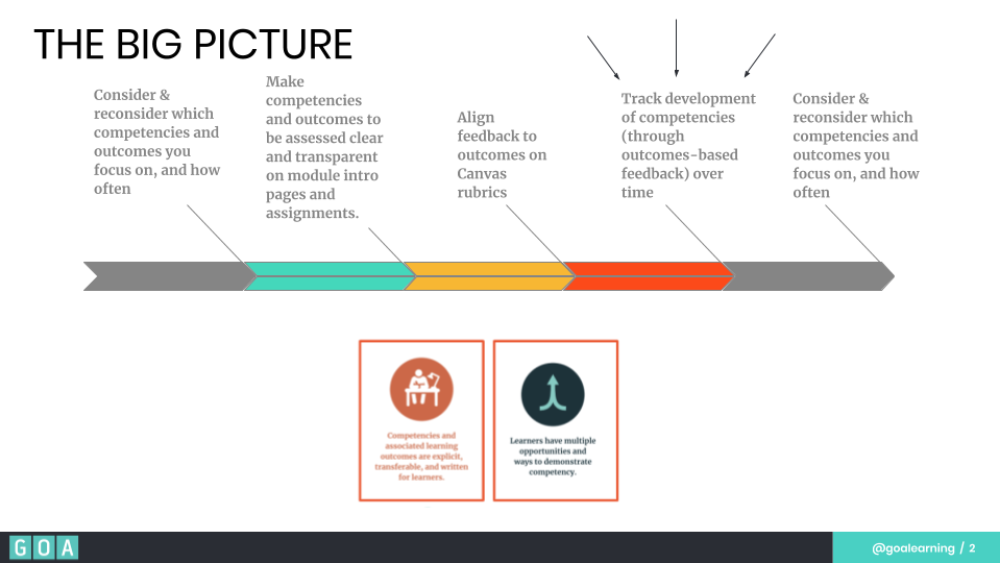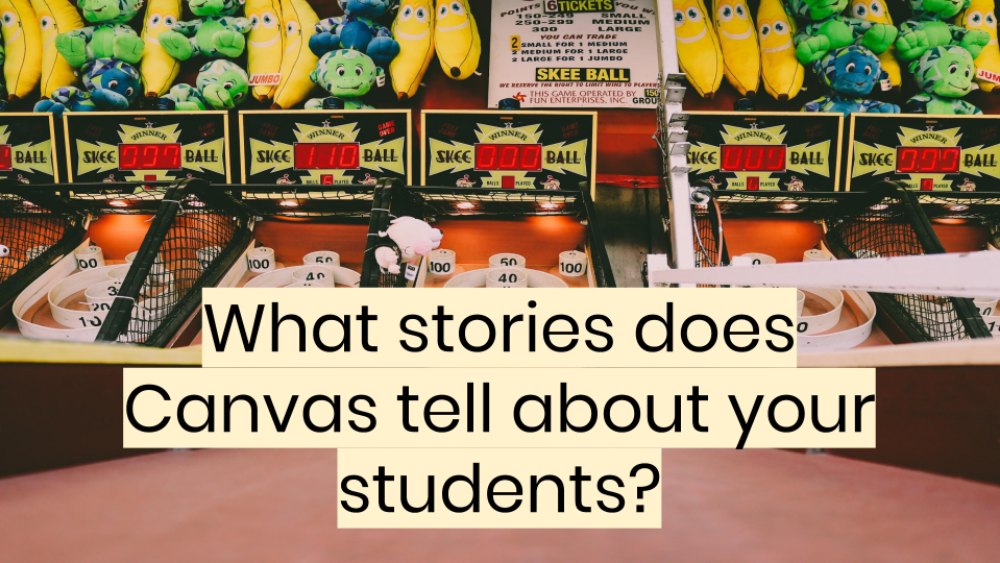Five Ways to Build Educator Community Online
With many schools around the world now online, the question of how to stay connected and support teachers, particularly during an uncertain time, is essential. At GOA we are constantly working on our online faculty culture and community: it’s all we’ve got, given our faculty come from 90+ schools around the world, many have never met each other in person, some started at GOA this year, and a growing number have taught with us for five years or more.
Why does a faculty culture and community matter? That question transcends setting, especially now. Recent days have laid bare how much human connections matter. We’re all scrambling to find ways to stay in touch with our extended families, our neighbors, our best friends, pretty much everyone in our lives whose physical absence we feel all the time. My 82-year-old mother now uses Zoom; soon I will teach her how to “mute all.”
Well before COVID-19, we prioritized our GOA faculty culture because of the fundamental roles community and human connections play in motivation, engagement, and learning. Professional communities are inspirational and practical. It has been remarkable to watch our global faculty over recent weeks as they shared resources and schedules for online schools as well as hope, humor, and help for each other. Further, they became crucial human resources for their schools and colleagues because of their online experience, including their firsthand knowledge that a faculty community can exist and thrive online.
Below are five things we do at GOA to build our online faculty community.
1. Slack
High-functioning remote organizations have abandoned older tools like email for modern chat tools. At GOA, Slack changed faculty culture (Microsoft Teams and Twist offer similar features). Imagine extracting almost every school email from your inbox and organizing them by topic or initiative or support need. That’s what Slack channels enable. Slack lets you chat, akin to text messaging. It’s easier and faster than email for quick queries or fast chats, conversations, and check-in’s. It allows for human interactions in an easy-to-use and beautifully designed setting. Further, you can integrate Slack with Google Drive and Zoom, making it easy to share links or meeting invitations; you can also integrate with Bitmoji, if that’s your thing. You can “pin” docs, making them simple to find.
We did establish Slack norms at GOA, and we’ve revised channels as we learned about what was working, what wasn’t, and what was needed. We defined what specific channels were for, and we did housekeeping in the early days to keep them tidy. We established shared practices around what types of topics made sense for the Slack setting and what didn’t. Importantly, we’re funny in Slack, and we share music and readings, too.
2. Faculty Bulletins or Digital Bulletin Boards
Every Friday, I send out the Friday Faculty Bulletin, a one-stop communication hub. It’s forced me to gather what matters and give it to people once, rather than the message or announcement dribble that can seep into most days or gobble time at meetings. Beyond logistics and deadlines, we use it for shout outs, and we share good stuff from courses, calendars, and resources. Here's a sample. Note how the bulletin begins with essential information for those who don't have the time to dive deeply. We then continue with useful tips and examples from GOA courses.
3. Intentionally Designed Gatherings

A slide from a GOA faculty "Power Hour" on competency-based learning.
When is it most valuable to gather people at the same time in the same place?
That question becomes imperative when you straddle time zones, where finding meeting times is hard. However, it’s also a question that recognizes we have choices about communication and that people’s time is precious, regardless of whether you work in one time zone or many. At GOA, we don’t have meetings to cover logistics or make announcements. We use Slack for that. We largely use synchronous gatherings for teacher learning, which is fundamental to driving student learning.
In recent years, we’ve had “power hours” and “design sprints.” We open them with icebreakers, and we aim to make them relevant and immediately applicable. In the course of the school year, we might offer “comment sprints” or a Power Hour on “Designing a Feedback Plan” or a how-to on the Canvas LMS gradebook. During the summer, these gatherings are longer and focus on course architecture or renovation of competencies and outcomes along with more involved topics that make more sense for a summer schedule than that of the school year. Ideally, these gatherings invite peer feedback and collaboration. We sometimes use a “consultancy protocol,” where teachers bring a thorny topic to tackle with the hive mind, or we focus on a case study and leverage the participants to generate insights, questions, and ways to make change.
Speaking of gatherings, I recommend Priya Parker’s The Art of Gathering, How We Meet and Why It Matters, an awesome resource for rethinking how to make gatherings “transformative.” No time for a book? Check out her TED Talk.
4. A Focus on Coaching
We have a distributed leadership, peer coaching model in which each faculty member is part of a coach cohort led by a GOA Learning Design Coach, who’s also a GOA teacher. Within cohorts are course teams who teach multiple sections of the same course.
The coach cohort itself is a community, with a Slack course channel, synchronous gatherings, and relationships that lead coaches to lean on and seek each other’s advice. All coaches have two to three annual meetings with their cohort, either individual ones or in course teams, depending on needs. All coaching happens online, and frequent Slack conversations are weekly parts of teachers’ collaboration with and support of one another.
5. Tech Tool "Carnivals"

A sample from a Carnival about making the most of Canvas, GOA's Learning Management System (LMS), and other tools.
Lean on teachers' experience with trying and vetting tools and have them show their colleagues how to use them. Host a tech tool carnival. Seek recommended tools and teachers to demo them. For example, have a few faculty members do demos, then lead a quick conversation about a tool they cannot live without. Participants ask questions and brainstorm new ways to use the tools, too. At GOA, this always begins with the “why,” or the pedagogical value of the tool. Encourage people to bring popcorn and peanuts, beer, wine, coffee, or tea (or not). Or do the whole thing async, using video demos and “comments” in Slack or Google Docs for questions and quick exchanges. Teachers are eager to find better ways to do things (while also being wary of too much tech). Our tech tool carnival leaned on the great work of Jennifer Gonzalez of Cult of Pedagogy and her annual tech tool guide to provide context and teacher tech user profiles. We’re also big fans of leveraging the help centers that most tools from Slack to Loom have with short, highly accessible videos.
Professional Communities Matter More Now Than Ever Before
A few things I’m hearing that schools are doing right now to connect, support, and communicate:
- Photo shares of new home-based workspaces.
- Friday Happy Hours (optional) and choices such as trivia, tech tool talk, or the no-plan, no host gathering. (Any of these can be paired with the “bring your pet or favorite plant or another living thing.”).
- Virtual morning coffee for parents/guardians or faculty and staff.
- Town Hall meetings for parents/guardians: quick update on online program followed taking questions, submitted in a chat space (and moderated by someone not leading the gathering)
I have built relationships with 80+ educators around the world, I know their dogs’ names, I know about their interest in beekeeping or marathon running or travel or life on a pear farm, and I have worked with them on designing more than fifty courses, moving our program to competency-based learning, hammering out new guidelines for research and documentation, and so much more. Our teachers inspire me every day, and I look forward to finding their messages in Slack every morning when I arrive at work. Right now their support, connections with me and each other, their inspiring dedication to their students are what give me hope.
We would love to hear how you are building teacher communities online! Share with us on Twitter.
Want to learn with GOA? Explore our educator courses. Want to join our global faculty? Apply to teach one of our student courses.


